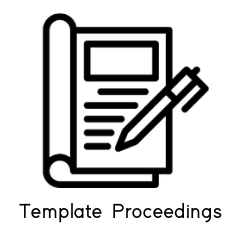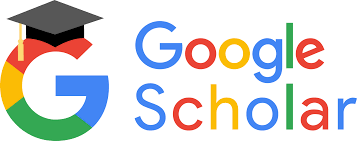Development of a Chemical Literacy Assessment on Colloid (CLAC) Instrument to Measure Chemical Literacy
DOI:
https://doi.org/10.29103/micoms.v3i.50Keywords:
chemical literacy, assessment, colloidAbstract
The 21st century requires four specific skills namely literacy, inventive thinking, effective communication, and high productivity. Literacy includes basic literacy, scientific literacy, economic literacy, technological literacy, visual literacy, information literacy, and multicultural literacy. The purpose of this research is to produce a chemical literacy assessment instrument on colloidal system material that is suitable for use as a chemistry measurement tool for high school students who meet the requirements of feasibility validity, reliability, and level of difficulty. This research is a form of development research or R&D (Research and Development). The development model used in this research is the Oriondo and Dallo Antonio instrument development model, which has five stages: 1) planning the test, 2) trying out the test, 3) establishing empirical validity (establishing test validity), 4) determining reliability (establishing test reliability), 5) interpretation of scores (interpreting the test scores). The data collection instruments used in this study were questionnaire validation sheets, question validation sheets, and development results questions. The reliability value of the person from the score obtained in the trial was 0.55 indicating that the reliability of the person or students was in the medium category. Reliability value item was 0.48 in the medium category. Overall, the average reliability value or Cronbach Alpha is 0.69 in the sufficient category. So it can be concluded that the score obtained from the assessment instrument is reliable because it has fulfilled a minimum coefficient value of 0.60.
References
Y. Yuliati, “Literasi sains dalam pembelajaran IPA,” J. cakrawala pendas, vol. 3, no. 2, p. 266426., 2017.
M. Muliani, M. Marhami, and I. R. Lukman, “Persepsi Mahasiswa Calon Guru Tentang Literasi Sains,”
JISIP (Jurnal Ilmu Sos. dan Pendidikan), vol. 5, no. 1, Jan. 2021, doi: 10.36312/JISIP.V5I1.1575.
Y. Rahmawati, A. Ridwan, T. Hadinugrahaningsih, and Soeprijanto, “Developing critical and creative thinking skills through STEAM integration in chemistry learning,” J. Phys. Conf. Ser., vol. 1156, no. 1, p. 012033, Jan. 2019, doi: 10.1088/1742-6596/1156/1/012033.
Yandriani, R. U. Rery, and M. Erna, “Developing and Validating the Assessment Instruments to Measure Students’ Analytical Thinking Ability and Chemical Literacy on Colligative Properties,” J. Phys. Conf. Ser., vol. 1788, no. 1, p. 012027, Feb. 2021, doi: 10.1088/1742-6596/1788/1/012027.
H. Muchtar, “Kurnia Pengembangan Instrumen Literasi Kimia Siswa SMA Pada Materi Larutan,”
Universitas Pendidikan Indonesia, 2019.
E. Ad’Hiya and E. W. Laksono, “Students’ Analytical Thinking Skills and Chemical Literacy
Concerning Chemical Equilibrium,” AIP Conf. Proc., vol. 2021, no. 1, p. 080005, Oct. 2018, doi:
1063/1.5062824.
P. Turiman, J. Omar, A. M. Daud, and K. Osman, “Fostering the 21st Century Skills through Scientific Literacy and Science Process Skills,” Procedia - Soc. Behav. Sci., vol. 59, pp. 110–116, Oct. 2012, doi: 10.1016/J.SBSPRO.2012.09.253.
S. Rahayu, “Mengoptimalkan aspek literasi dalam pembelajaran kimia abad 21,” in Prosiding Seminar Nasional Kimia UNY, 2017, pp. 183–188.
R. Thummathong and K. Thathong, “Chemical literacy levels of engineering students in Northeastern
Thailand,” Kasetsart J. Soc. Sci., vol. 39, no. 3, pp. 478–487, Sep. 2018, doi: 10.1016/J.KJSS.2018.06.009.
R. Thummathong and K. T. Hathong, “Construction of a chemical literacy test for engineering students,” J. Turkish Sci. Educ., vol. 13, no. 3, pp. 185-198., 2016.
U. Aiman, S. Hasyda, and Uslan, “The Influence of Process Oriented Guided Inquiry Learning (POGIL) Model Assisted by Realia Media to Improve Scientific Literacy and Critical Thinking Skill of Primary School Students,” Eur. J. Educ. Res., vol. 9, no. 4, pp. 1635–1647, Oct. 2020, doi: 10.12973/EU-JER.9.4.1635.
OECD, PISA 2018 Insight and Interpretations. 2019.
N. Sutrisna, “Analisis Kemampuan Literasi Sains Peserta Didik SMA Di Kota Sungai Penuh. Jurnal
Inovasi Penelitian,” J. Inov. Penelit., vol. 1, no. 12, pp. 2683–2694, 2021, doi: 10.47492/jip.v1i12.530.
N. P. Pertiwi, N. D. Nurhayati, and S. Saputro, “Analysis of Science Literacy Teaching Book Class XI at SMA Negeri Surakarta on Acid-Base Material,” THABIEA J. Nat. Sci. Teach., vol. 5, no. 1, pp. 17–33, Mar. 2022, doi: 10.21043/THABIEA.V5I1.11719.
A. Ekantini and I. Wilujeng, “The Development of Science Student Worksheet Based on Education for Environmental Sustainable Development to Enhance Scientific Literacy.,” Univers. J. Educ. Res., vol. 6, no. 6, pp. 1339–1347, 2018, doi: 10.13189/ujer.2018.060625.
J. Jufrida, F. R. Basuki, W. Kurniawan, M. D. Pangestu, and O. Fitaloka, “Scientific Literacy and Science Learning Achievement at Junior High School,” Int. J. Eval. Res. Educ., vol. 8, no. 4, pp. 630–636, Dec. 2019, doi: 10.11591/IJERE.V8I4.20312.
J. Vogelzang, W. F. Admiraal, and J. H. Van Driel, “Effects of Scrum Methodology on Students’ Critical Scientific Literacy: the Case of Green Chemistry,” Chem. Educ. Res. Pract., vol. 21, no. 3, pp. 940–952, Jun. 2020, doi: 10.1039/D0RP00066C.
E. V. Aulia, S. Poedjiastoeti, and R. Agustini, “The Effectiveness of Guided Inquiry-Based Learning Material on Students’ Science Literacy Skills,” J. Phys. Conf. Ser., vol. 947, no. 1, p. 012049, Jan. 2018, doi: 10.1088/1742-6596/947/1/012049.
U. Cahyana, S. Supatmi, Erdawati, and Y. Rahmawati, “The Influence of Web-Based Learning and Learning Independence toward Student’s Scientific Literacy in Chemistry Course.,” Int. J. Instr., vol. 12, no. 4, pp. 655–668, Oct. 2019, doi: 10.29333/iji.2019.12442a.
C. A. Dewi, Y. Khery, and M. Erna, “An Ethnoscience Study in Chemistry Learning to Develop
Scientific Literacy,” J. Pendidik. IPA Indones., vol. 8, no. 2, pp. 279–287, 2019, doi: 10.15294/jpii.v8i2.19261.
M. Imansari, Sudarmin, and W. Sumarni, “Analisis Literasi Kimia Peserta Didik Melalui Pembelajaran Inkuiri Terbimbing Bermuatan Etnosains,” J. Inov. Pendidik. Kim., vol. 12, no. 2, pp. 2201–2211, 2018, doi:
15294/jipk.v12i2.15480.
M. Perkasa and N. Aznam, “Pengembangan SSP kimia berbasis pendidikan berkelanjutan untuk meningkatkan literasi kimia dan kesadaran terhadap lingkungan,” J. Inov. Pendidik. IPA, vol. 2, no. 1, pp. 46–57, Apr. 2016, doi: 10.21831/JIPI.V2I1.10269.
M. Mellyzar, I. R. Lukman, and B. Busyraturrahmi, “Pengaruh Strategi Process Oriented Guided Inquiry Learning (POGIL) Terhadap Kemampuan Proses Sains dan Literasi Kimia,” Jambura J. Educ. Chem., vol. 4, no. 2, pp. 70–76, Aug. 2022, doi: 10.34312/JJEC.V4I2.15338.
Y. Shwartz, R. Ben-Zvi, and A. Hofstein, “Chemical literacy: What does this mean to scientists and school teachers?,” J. Chem. Educ., vol. 83, no. 10, p. 1557, 2006.
S. Celik, “Chemical Literacy Levels of Science and Mathematics Teacher Candidates,” Aust. J. Teach.
Educ., vol. 39, no. 1, p. 39, 2014, doi: 10.14221/ajte.2014v39n1.5.
S. S. Fahmina, N. Y. Indriyanti, W. A. E. Setyowati, M. Masykuri, and S. Yamtinah, “Dimension of Chemical Literacy and its Influence in Chemistry Learning,” J. Phys. Conf. Ser., vol. 1233, no. 1, p. 012026, Jun. 2019, doi: 10.1088/1742-6596/1233/1/012026.
A. Asyhari, “Profil peningkatan kemampuan literasi sains siswa melalui pembelajaran saintifik,” J. Ilm. Pendidik. Fis. Al-Biruni, vol. 4, no. 2, pp. 179–191, 2015.
O. Inbar-Lourie, “Language Assessment Literacy,” Encycl. Appl. Linguist., Nov. 2012, doi: 10.1002/9781405198431.WBEAL0605.
C. Coombe, H. Vafadar, and H. Mohebbi, “Language Assessment Literacy: What Do We Need to Learn,
Unlearn, and Relearn?,” Lang. Test. Asia, vol. 10, no. 1, pp. 1–16, Dec. 2020, doi:
1186/S40468-020-00101-6/TABLES/1.
N. Chasanah, W. Widodo, and N. Suprapto, “Pengembangan Instrumen Asesmen Literasi Sains Untuk Mendeskripsikan Profil Peserta Didik,” PENDIPA J. Sci. Educ., vol. 6, no. 2, pp. 474–483, May 2022, doi:
33369/PENDIPA.6.2.474-483.
A. Rusilowati, S. E. Nugroho, E. S. M. Susilowati, T. Mustika, N. Harfiyani, and H. T. Prabowo, “The Development of Scientific Literacy Assessment to Measure Student’s Scientific Literacy Skills in Energy Theme,” J. Phys. Conf. Ser., vol. 983, no. 1, p. 012046, Mar. 2018, doi: 10.1088/1742-6596/983/1/012046.
N. Muniroh, A. Rusilowati, and W. Isnaeni, “Instrument Development of Science Literacy Assessment with Socio-Sciences Contains in Natural Science Learning for Elementary School,” J. Res. Educ. Res. Eval., vol. 11, no. 1, pp. 15–22, Mar. 2022, doi: 10.15294/JERE.V11I1.55421.
M. N. B. Prastiwi and E. W. Laksono, “The Ability of Analytical Thinking and Chemistry Literacy in
High School Students Learning,” J. Phys. Conf. Ser., vol. 1097, no. 1, p. 012061, Sep. 2018, doi: 10.1088/1742-6596/1097/1/012061.
M. Muntholib, S. Ibnu, S. Rahayu, F. Fajaroh, S. Kusairi, and B. Kuswandi, “Chemical literacy: Performance of first year chemistry students on chemical kinetics,” Indones. J. Chem., vol. 20, no. 2, pp. 468–482, 2020.
L. L. Oriondo and E. M. D. Antonio, Evaluating Educational Outcomes (Test, Measurement and
Evaluating). Philippines: Rex Book Store, 1984.
L. R. Aiken, “Three Coefficients for Analyzing: the Reliability and Validity of Ratings,” Educ. Psychol. Meas., vol. 45, no. 1, pp. 131–142, 1985, doi: 10.1177/0013164485451012.
Y. Shwartz, R. Ben-Zvi, and A. Hofstein, “The Use of Scientific Literacy Taxonomy for Assessing the Development of Chemical Literacy Among High-School Students,” Chem. Educ. Res. Pract., vol. 7, no. 4, pp. 203–225, Oct. 2006, doi: 10.1039/B6RP90011A.
T. G.Bond and C. M. Fox, Applying the rasch model fundamental measurement in the human science
(3rd ed.). New York: Routledge, 2015.
E. Brentani and S. Golia, “Unidimensionality in the Rasch model: how to detect and interpret,”
Statistica, vol. 67, no. 3, pp. 253–261, Sep. 2007, doi: 10.6092/ISSN.1973-2201/3508.
B. Sumintono and W. Widhiarso, Aplikasi model rasch untuk penelitian ilmu-ilmu soasial. Cimahi: Trim Komunikata Publishing House, 2014.
M. Park and X. Liu, “An Investigation of Item Difficulties in Energy Aspects Across Biology, Chemistry, Environmental Science, and Physics,” Res. Sci. Educ., vol. 49, no. 140, pp. 1–18, 2019, doi: 10.1007/s11165-019-9819-y.
L. J. Cronbach, “Coefficient Alpha and the Internal Structure of Tests,” Psychometrika, vol. 16, no. 3, pp. 297–334, Sep. 1951, doi: 10.1007/BF02310555.
J. M. Cortina, “What is Coefficient Alpha? An Examination of Theory and Applications,” J. Appl.
Psychol., vol. 78, no. 1, pp. 98–104, 2013, doi: 10.1037/0021-9010.78.1.98.
Sujarwanto and A. Rusilowati, “Pengembangan Instrumen PerformanceAssessment berpendekatan
Scientific pada Tema Kalor dan Perpindahannya,” Unnes Sci. Educ. J., vol. 4, no. 1, pp. 780–787, 2015.
L. Rome and B. Zhang, “Investigating the Effects of Differential Item Functioning on Proficiency Classification,” Appl. Psycological Meas., vol. 42, no. 4, pp. 259–274, 2018, doi: 10.1177/0146621617726789.
H. Hambleton, R. K Swaminathan, Item response theori: Principles and applications. New York:
Kluwer Nijhof Publishing, 1985. doi: 10. 1007/978-94-017-1988-9.
D. Mardapi, Pengukuran Penilaian dan Evaluasi Pendidikan. Yogyakarta: Nuha Medika, 2012.
Downloads
Published
Issue
Section
License
Copyright (c) 2022 Isna Rezkia Lukman, Mellyzar Mellyzar, Sirry Alvina, Nailis Saa’dah

This work is licensed under a Creative Commons Attribution-ShareAlike 4.0 International License.
COPYRIGHT NOTICE
Authors retain copyright and grant the journal right of first publication and this work is licensed under a Creative Commons Attribution-ShareAlike 4.0 that allows others to share the work with an acknowledgment of the work's authorship and initial publication in this journal.
All articles in this journal may be disseminated by listing valid sources and the title of the article should not be omitted. The content of the article is liable to the author.
Authors are able to enter into separate, additional contractual arrangements for the non-exclusive distribution of the journal's published version of the work (e.g., post it to an institutional repository or publish it in a book), with an acknowledgment of its initial publication in this journal.
Authors are permitted and encouraged to post their work online (e.g., in institutional repositories or on their website) prior to and during the submission process, as it can lead to productive exchanges, as well as earlier and greater citation of published work.
In the dissemination of articles, the author must declare https://proceedings.unimal.ac.id/micoms/index as the first party to publish the article.






